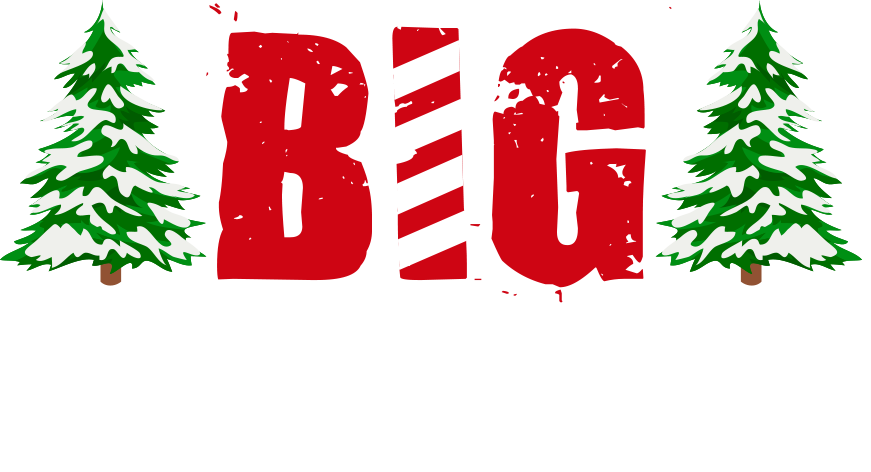Tree Info
There is nothing like a natural Christmas tree to enjoy at Christmas time. The look, the scent and the very feel of a REAL tree are integral parts of the warm, homey atmosphere of our most festive season. Choosing the perfect tree is a cherished tradition in many families. Whether you visit a retail lot or join the tens of thousands who treasure their annual visit to a choose-and-cut farm, you will enjoy knowing that your natural Chistmas tree is great for the environment and provides employment for thousands of Americans.
Definitely not! Christmas trees do not come from the forest! Almost everywhere in North America, Christmas trees are grown as a crop on tree farms. For every tree harvested, there are ten more coming along, otherwise the farmer could not meet their harvest needs each year.
NO! Christmas trees are the most environmentally friendly crop around. This is because a tree is harvested only after ten years. To ensure future harvests, ninety percent of the farm must remain in trees all the time.
Just one acre of Christmas trees produces enough oxygen to support eighteen people. In the process, CO2 is taken out of the atmosphere, counteracting the production of CO2 resulting from human use of fossil fuels. Trees also act as air pollution filters and can remove up to 13 tons of airborne pollutants per acre per year. Christmas tree farms are havens for a wide variety of bird and mammal species including grosbeaks, sparrows, chickadees, foxes, coyotes, mice and squirrels.
No. Most municipalities collect discarded natural Christmas trees and chip the for use as mulching materials. Real Christmas trees are completely biodegradable and will, on their own, break down and return their stored nutrients to the soil from which they came from. There are also other ways in which REAL Christmas trees go right on giving long after the Christmas season is over. They can be used as bird feeders, wood products can be made from their stems or they can be used as wildlife cover in fish ponds and wood lots alike. Real trees are a renewable, recyclable resource. Artifical trees contain non-biodegradable plastic and possible metal toxins such as lead, cadmium and organo-tins.
Tree Care Tips
When a Christmas tree is cut, over half of its weight is water. With proper care, you can maintain the quality of your displayed tree and avoid potential home safety hazards.
- Displaying trees in water is the most effective way of maintaing their freshness and minimizing needle loss problems.
- In selecting a tree, make sure that the "handle" at the bottom is long enough to allow the trunk to fit into you tree stand. Otherwise, it will be necessary to remove large branches near the base, which could ruin its appearance.
- Make a fresh cut to remove a 1/4" to 1" thick disk of wood from the base of the trunk before putting the tree in the stand. Make the cut perpendicular to the stem axis. Don't cut the trunk at an angle, or into a v-shape, which makes it far more dif¬ficult to hold the tree in the stand and also reduces the amount of water available to the tree. If you use a "center pin" stand, make sure the hole is drilled in the stem after it is trimmed.
- Once home, place the tree in water as soon as possible. Most species can go 6-8 hours after cutting the trunk and still take up water. Don't bruise the cut surface or get it dirty.
- If needed, trees can be temporarily stored for several days in a cool location. Place the freshly cut trunk in a bucket that is kept full of water. The tree may need to be supported to keep it from tipping over.
- To display the trees indoors, use a stand with an adequate water holding capacity for the tree. As a general rule, stands should provide 1 quart of water per inch of stem diameter. Devices are available that help maintain a constant water level in the stand.
- Make sure your tree stand holds at least 1 gallon of water. The average 6-foot tree has a 4-inch diameter trunk, and can consume as much as 4 quarts or 1 gallon of water per day.
- Use a stand that fits your tree. Some stands have circular rings at the top, so the ring must be large enough for the trunk to go through the hole. Other stands are open, which may allow a greater range in trunk size. Do not whittle the sides of the trunk down to fit a stand. The outer layers of wood are the most efficient in taking up water and should not be removed.
- Keep displayed trees away from sources of heat (fireplaces, heaters, heat vents, direct sunlight). Lowering the room temperature will slow the drying process, resulting in less water consumption each day.
- Check the stand daily to make sure that the level of water does not go below the base of the tree. With many stands, there can still be water in the stand even though the base of the tree is no longer submerged in water.
- Do not use additives in the water, including floral preservatives, commercial tree preservatives, molasses, sugar, bleach, soft drinks, aspirin, honey, and other concoctions.
- Displaying trees in water with proper care is the most effective way of maintaining a tree's moisture.
- Use light strings that bear the UL Mark. The UL Mark on the light string means UL engineers have tested samples of the product for potential fire and electric shock hazards. Light strings with UL's green holographic label are for indoors use only; lights with UL's red holographic label are for either indoors or outdoors.
- Use of miniature lights will produce much less heat and reduce drying of the tree.
- Always inspect light sets prior to placing them on the tree. If worn, replace with a new set.
- Check your light strings to determine the maximum number of strings that may be connected. For push-in bulbs connect no more than three strings.
- Do not overload electrical circuits and always turn off the lights when leaving the house or when going to bed.
- Monitor the tree for freshness. After Christmas or if the tree is dry, remove it from the house.
- Go to realchristmastrees.org to learn more about tree recycling programs.
- Never bum any part of a Christmas tree in a wood stove or fireplace.



